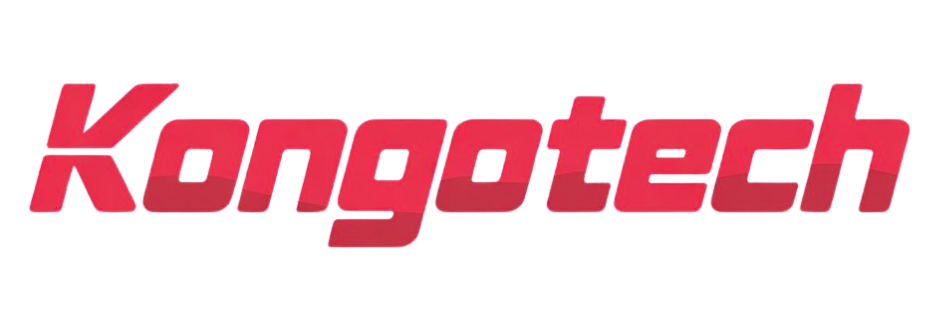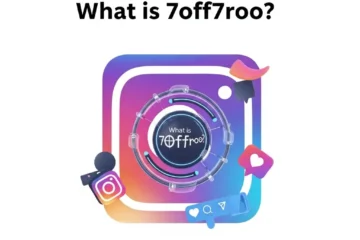Summary
Clean, distraction-free product and portrait images used to require tedious masking in Photoshop. Today’s AI background remover tools cut backgrounds with one click, generate transparent PNGs/WebP, and even process entire catalogs in bulk. This guide shows e-commerce sellers and social marketers how to deploy AI background removal the right way—compliantly, at scale, and without hurting quality or load speed.
Why background removal matters for commerce
- Compliance & approvals. Marketplaces have strict image rules. Amazon’s main image requires a pure white background (RGB 255,255,255), and violations can suppress listings. Amazon Seller Central
- Ad performance. Google’s Merchant Center recommends white or transparent backgrounds for product images, which blend better with shopping surfaces and reduce visual noise. Google Help
- Conversion & UX. High-quality images are repeatedly tied to higher purchase confidence and conversion—if they load fast and show the product clearly. Shopify+1
What an AI background remover actually does (in plain English)
Modern “one-click background remover” tools use computer-vision segmentation to separate foreground objects (your product or face) from the background. The output is either:
- A transparent background (PNG or WebP with alpha channel) you can place on any color or scene, or
- A solid, compliant background (often pure white) for marketplaces and ads.
Why PNG/WebP? Both support transparency (“alpha”). PNG’s transparency is defined in the W3C spec; WebP also supports lossless and alpha modes and typically produces smaller files—great for mobile speed. W3C+1
Quick comparison: formats & common use cases
| Use case | Best output format | Why it fits | Notes |
|---|---|---|---|
| Amazon main image | JPEG on pure white or PNG on white | Listing compliance and consistency | Amazon expects pure white background on main images. |
| Google Shopping feeds | PNG or WebP with white/transparent | Works with Merchant Center surfaces | Avoid transparent BG for very light products to prevent display issues. |
| Social creatives (Reels, Stories) | PNG or WebP | Transparent layers over brand canvases | WebP often smaller → faster mobile loads. |
| Landing pages/LP tests | WebP with alpha | Small file size with transparency | Ensure broad browser support & fallbacks if needed. |
When to use: one-click, transparent background generator, or bulk background remover
- One-click background remover for speed. Ideal for single hero images, founder portraits, and last-minute social posts.
- Transparent background generator for modular design. Drop your product cut-out onto seasonal backdrops or branded color fields without re-shooting. PNG/WebP alpha is your friend here. W3C+1
- Bulk background remover for catalogs. Apparel, cosmetics, consumer electronics, or hard goods with 50–5,000 SKUs benefit most—batching saves hours and keeps backgrounds consistent across variants (size/color).
Reality check: Background removal is 90% solved by AI on clean edges; fine frizz/hair, translucent glass, or reflective chrome may need a quick touch-up. That’s still minutes—not hours.
Hands-on notes from typical workflows (what to expect)
- Clean, matte products (boxes, bottles with matte labels): near-perfect one-click cutouts ~95% of the time.
- Hair & fur portraits: good first pass, but expect a 30–60 sec refine to restore fine strands.
- Transparent objects (glassware): AI will usually keep the rim and label, but you may need to manually bring back faint edges to avoid “floating” artifacts.
These patterns align with what we see across e-commerce usability work: clear, fast imagery helps users decide—and perform better on small screens.
Step-by-step: a problem → solution roadmap for teams
Problem 1: “Our listing is flagged for image non-compliance.”
Solution:
- Check the rule. For Amazon main images, use a pure white background (RGB 255,255,255).
- Run a one-click background remover on the hero angle; export JPEG over white or PNG flattened to white.
- Re-upload and verify the background is truly white (not near-white).
Problem 2: “Our product images look inconsistent across channels.”
Solution:
- Pick a master format with transparency (PNG or WebP alpha) and a standard crop (e.g., square 1:1, 2000px). WebP with alpha often cuts weight for mobile.
- Use a bulk background remover to create transparent masters for every SKU.
- Layer channel-specific backdrops (white for marketplaces, branded gradients for ads).
- Automate exports to the sizes each channel needs (e.g., marketplace main, thumbnails, social placements). Optimized images help performance and SEO.
Problem 3: “Pages are slow; our beautiful PNGs are heavy.”
Solution:
- Convert to WebP with alpha where supported and keep PNG as a fallback if your stack requires it; WebP can be dramatically smaller with similar quality.
- Serve responsive images (
srcset) to avoid sending desktop-sized assets to mobile. - Lazy-load below the fold to prioritize key visuals.
Practical checklist: setting up a reliable AI background removal pipeline
- Define compliance targets per channel (Amazon main: pure white; Google Shopping: white or transparent; your site: brand background).
- Pick master dimensions (e.g., 2000px longest side) so zoom features look crisp on PDPs and marketplaces.
- Choose output formats:
- PNG with transparency for maximum compatibility;
- WebP with alpha for smaller files where supported.
- Establish a “gate” step after one-click removal: quick manual refine for hair, glass, or chrome.
- Name and version assets (SKU, color, angle, background type).
- Run bulk jobs overnight for large catalogs; check 2–3% of files manually as QA spot-check.
- Optimize for web (compress, responsive, lazy-load).
- Archive masters safely; keep transparent originals so seasonal redesigns don’t require re-editing.
- Document the process in your brand’s imaging SOP for repeatability.
Common mistakes & how to avoid them
- Near-white backgrounds (e.g., #FAFAFA) on Amazon “main” images → suppression risk. Use true RGB 255,255,255 for the main shot.
- Transparent PNGs for very light products in Shopping feeds → unexpected black fringing on some surfaces. Use solid white backgrounds for pale items as Google cautions.
- Heavy PNGs everywhere → slow pages, lower conversions. Prefer WebP alpha where supported and keep a smart PNG fallback.
- No consistent crop or canvas → carousel “jumps.” Standardize aspect ratios and margins (e.g., product centered, 5–10% padding).
- Skipping QA on bulk jobs → halos, cut fingers, missing edges. Institute a quick visual scan checklist before publishing.
Mini table: file format cheat-sheet (with transparency support)
| Format | Transparency (alpha) | Typical use | Notes |
|---|---|---|---|
| PNG | Yes (alpha channel) | Marketplace/product masters; pixel-perfect edges | Spec now updated (2025) with modern features; still the go-to for crisp transparency. |
| WebP | Yes (lossless & lossy + alpha) | Web delivery where supported; smaller files | Excellent for mobile speed; ensure fallbacks. |
| JPEG | No | Amazon main image over pure white; photos without need for transparency | Smallest files but no alpha channel. Use a white canvas when required. |
FAQ
1) What’s the fastest way to remove background from an image for a single product?
Use a one-click background remover, export a PNG/WebP with transparency, then place it on a pure white or branded backdrop depending on the channel. For Amazon main images, ensure it’s pure white.
2) Should I always use transparent backgrounds?
Not always. Transparent backgrounds are flexible, but for very light products, Google warns they can display unpredictably. A solid white background is safer for Shopping/merchant feeds.
3) PNG vs WebP for transparent assets—which is better?
PNG is universally compatible and supports per-pixel transparency via an alpha channel; WebP also supports transparency (lossless and lossy) and is often smaller, which improves load time on mobile. Many modern stacks support WebP; use PNG as a fallback if needed.
4) How big should my images be for zoom?
A common guideline is 1,200–1,600px on the longest side so zooms aren’t pixelated. Pick a standard dimension across the catalog.
5) Will background removal improve conversions?
Cleaner, consistent product imagery supports decision-making and can boost conversion when combined with fast performance and good UX. Focus on both quality and optimization.
6) Is there any downside to “one-click” tools?
They can struggle with hair, glass, and complex reflections. Plan for quick manual refinements on those edge cases—still much faster than full manual masking.
7) What about new PNG capabilities—do they change my workflow?
PNG remains a reliable, lossless format with alpha; the spec’s latest edition (2025) ensures it stays modern. For web speed, you’ll still prefer WebP with alpha where possible.
Related: AI Transcription, Sorted: Complete Guide to Fast, Accurate, and Secure Workflows
Conclusion
AI has turned background removal from a time sink into a one-click step that scales—from single portraits to bulk catalog jobs. If you align outputs to channel rules (Amazon white, Google white/transparent), choose the right transparent background generator format (PNG, or WebP for speed), and add a light QA step for tricky edges, you’ll ship cleaner images faster—and convert better on mobile. Start by standardizing your imaging SOP, then bake background removal into your product launch roadmap so every new SKU goes live with clean, compliant visuals.




